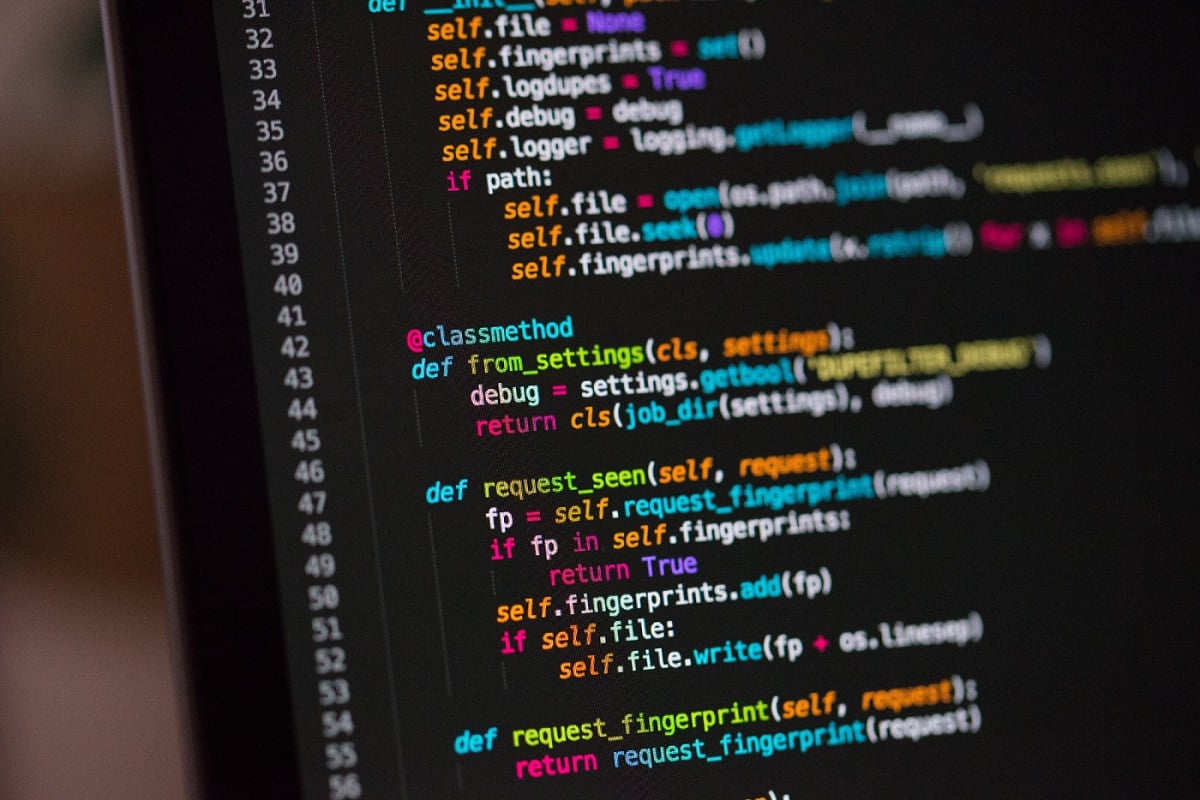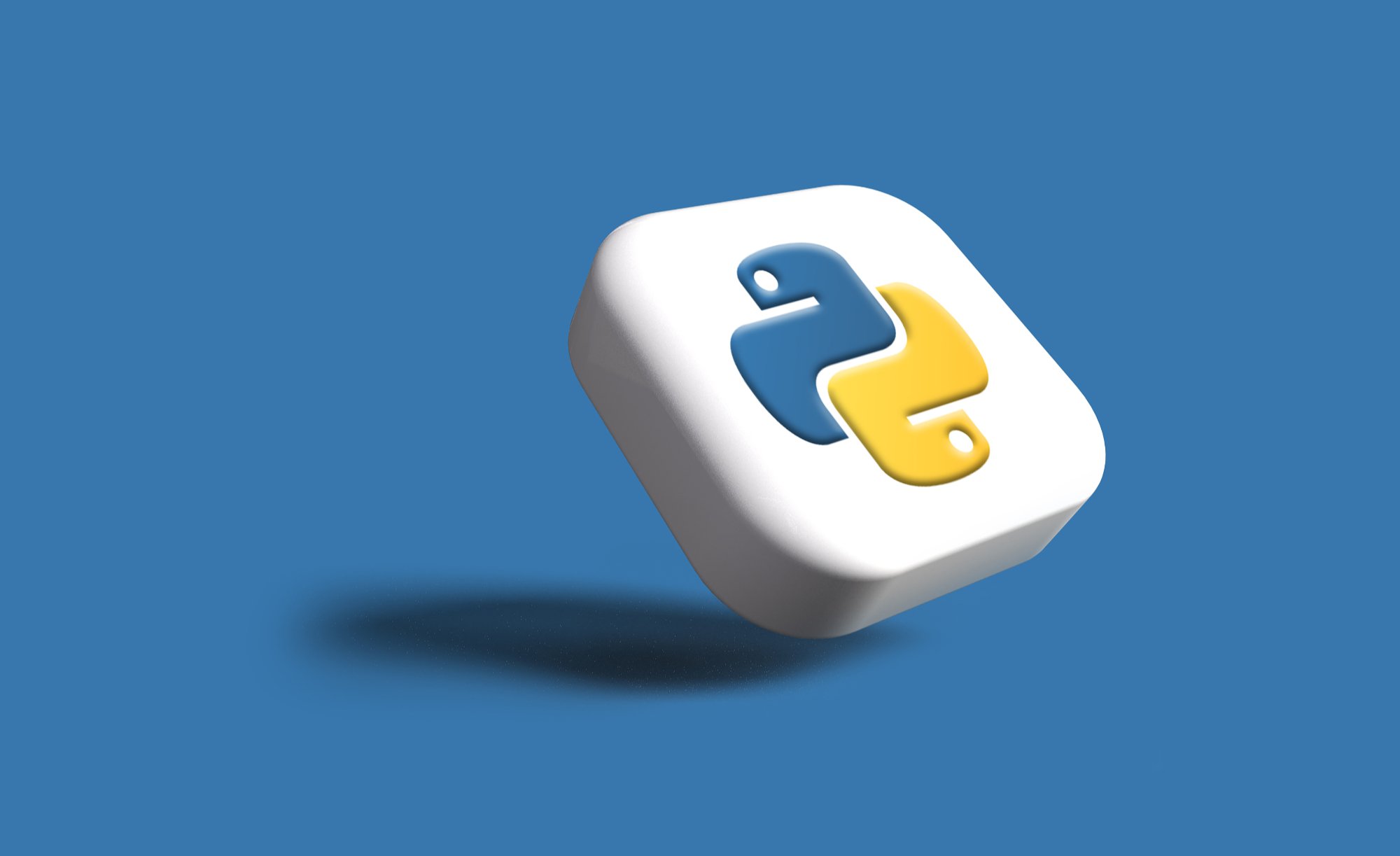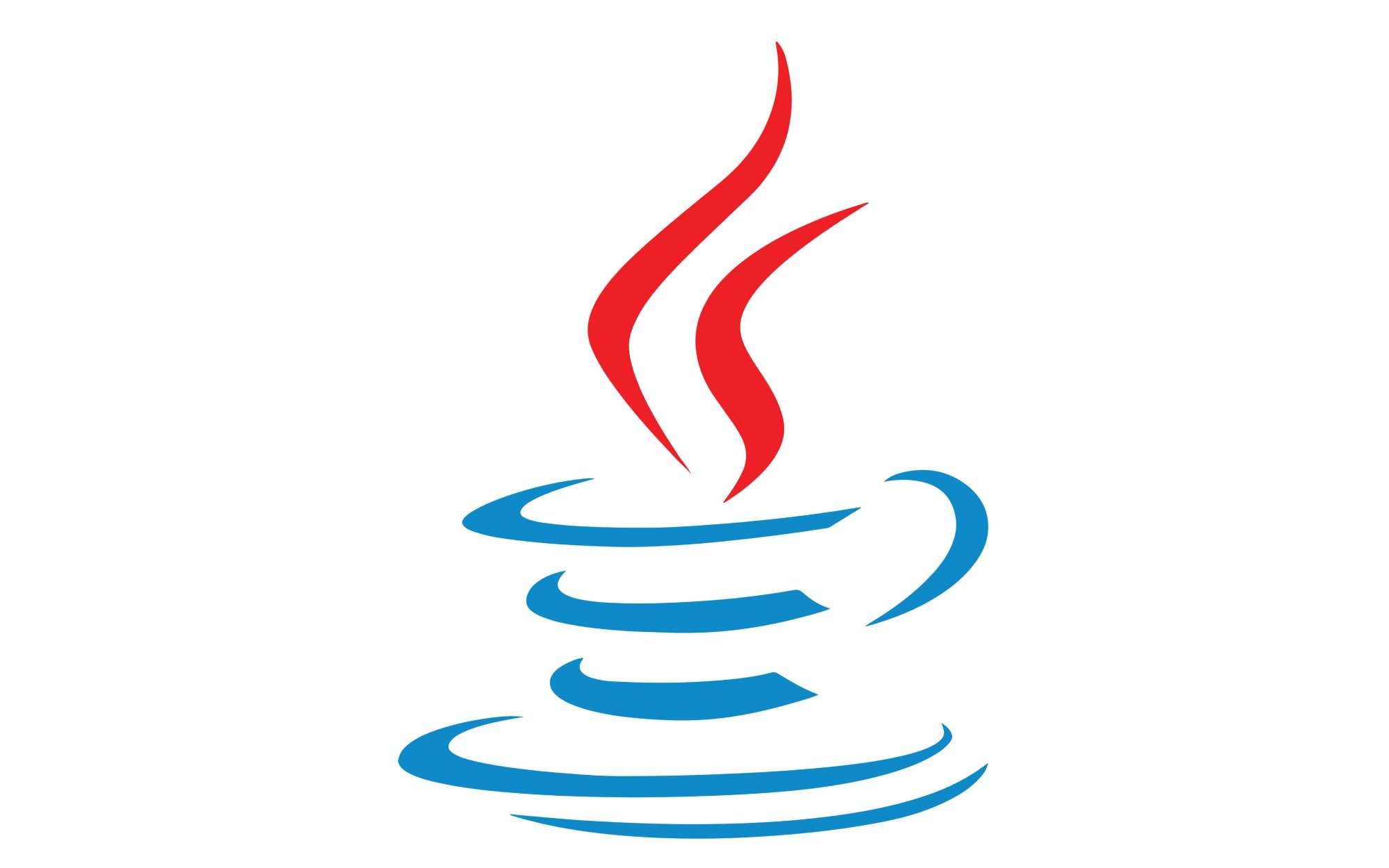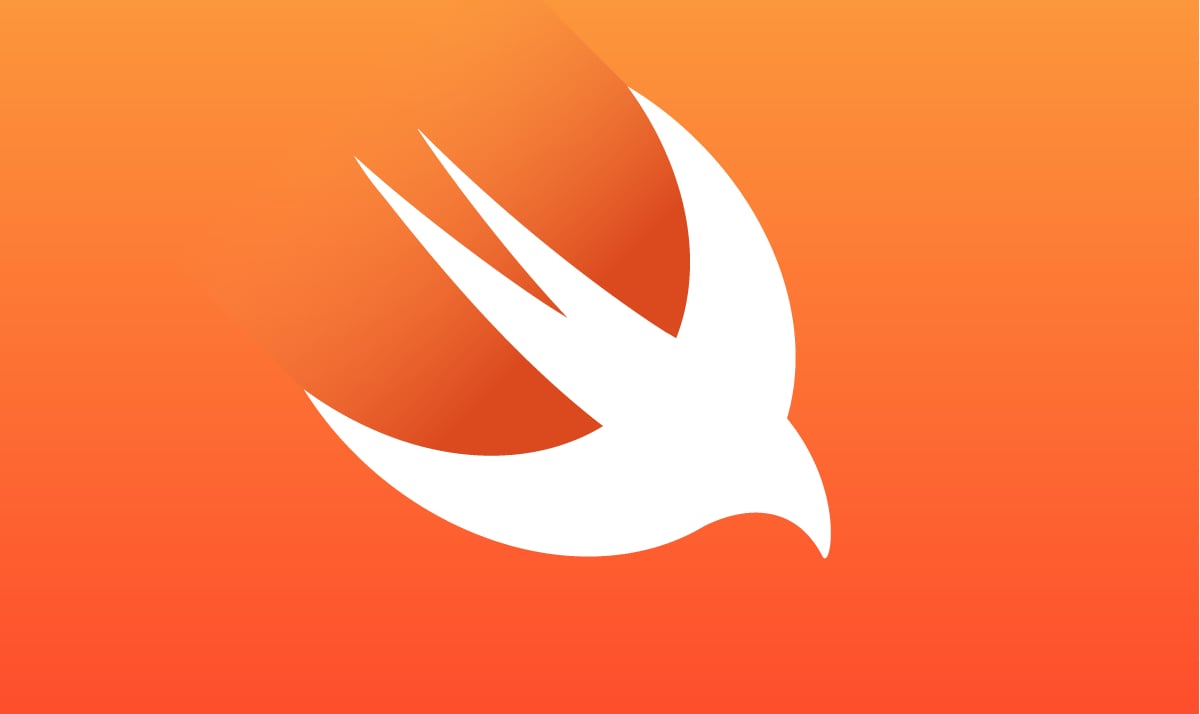Programming languages: what they are and how they work
Programming languages enable all electronic devices such as computers and smartphones to interpret instructions and codes that allow them to create websites, apps, web apps, programs and platforms that the whole world now uses every day.
Any website or platform, from Facebook to Netflix to the video games we use daily on our smartphones, are created from code. This is why learning to program is one of the most in-demand skills on the market today, as the world is now completely digitized.
In this guide we will look at what programming languages are, which ones are most commonly used, and which ones to learn in 2022, from the easiest to the most difficult and complex.
What is a programming language
Just as we humans use language to communicate with each other, similarly to communicate with computers, in short to be “understood” by machines, a number of languages used by programmers have been created.

Chris Ried
ABOUT UNSPLASH.
Here is a more specific definition: a programming language is a language used by developers and programmers that enables them to transform a set of written commands and instructions into specific data and activities.
A programming language is primarily used to develop desktop applications, websites, mobile applications, programs and enterprise platforms. Through writing these codes you can then convert your ideas into machine code capable of being “read” by computers of various types. In short, programming languages are used to give instructions to a computer by telling it what to do and how to do it.

How many types of programming languages exist
There are more than 2,500 programming languages, some of which are better known and others less widely used. These are classified according to the level of abstraction, starting from machine language to human logical language. Thus there are:
- Low-level languages: coincide with machine language and provide little or no abstraction. They are therefore “machine” oriented and their purpose is to be directly executable by the processor.
- High-level languages: are characterized by high abstraction and are “programmer” oriented, so their purpose is to be more understandable for easier use by developers.
These in turn are distinguished into various families based on the programming paradigm:
- Imperatives: where the instruction is an explicit command and the instructions are executed in a predetermined order. These include the C, COBOL and Assembly languages.
- Functional: they are based on the mathematical concept of function. Among these are the Scala, Clojure and Haskell languages.
- Logical: here the instruction is a clause that describes the relationship between data. Among these are the Prolog and Mercury languages.
There are also solutions that make life easier for developers:
- Scripting languages: originated to automate long and repetitive tasks to be performed by scripts that execute certain tasks. These include Javascript, PHP and Python.
What are the most commonly used programming languages
To understand which programming languages are the most used, specific rankings are made each year by TIOBE or PYPL, but you can also view the most used languages on GitHub (by selecting the year and quarter), a platform used by developers to store and manage their code.
Here, then, are some of the most widely used programming languages and what they are used for specifically. This list does not represent a ranking, just the most commonly used languages.
Python
Developed by Guido van Rossum in the 1990s, Python is one of the most popular programming languages in the world. It continues to be so successful because of its ease of use; in fact, it allows beginners to quickly learn how to create simple programs.
In addition to this, Python speeds up code writing because of its large collection of programming libraries and frameworks on which it is based (systems that allow the language’s functionality to be extended with actions and commands), which speed up code writing, along with a large community of developers to turn to if you need help.

on Unsplash. Logo i Python, famous programming language
Python is mostly unused for building programs that take advantage of artificial intelligence, data analysis, and machine learning. Many also use it for web development or to create enterprise applications. Among the most famous applications built with Python (along with its Django framework) is Instagram.
Javascript
Created in 1995 by Netscape, it is a programming language widely used along with HTML and CSS (which are markup languages, not programming languages) to build interactive Web sites and applications of various kinds. Javascript succeeded in shaking up the static nature of web pages seen at the time (and still does today) by adding dynamic animations and many more possibilities for user interaction.
Today it is regarded as the pivotal programming language for the front-end of the Web, that is, the part that the user sees, the interface. It therefore handles everything interactive in a web page, from pop-ups to alerts.
In addition, Javascript is the perfect language if you want to run an application on many different devices and technologies-from the cloud to smartphones to the many different browsers available. Coupled with Node.js, a Javascript framework used to write server-side applications, you can build back-end (everything that operates “behind the scenes” of a web page or app), games, and applications that run in the browser.
Java
It is the quintessential programming language used to build enterprise applications. Created in 1995, it is a so-called “object-oriented” language, a programming paradigm that allows software objects to be defined that can interact with each other through the exchange of messages.

Java was created as a precompiled language: meaning that an application written with this programming language can run from any platform that supports Java (following the motto “write once, run anywhere”).
It is therefore used to develop enterprise applications, but also by Android programmers (it is precisely the language with which the Android operating system was created), or to develop banking and e-commerce applications.
C/C++
It is among the first programming languages ever created. C was released in the 1970s, while C++ in the 1980s as an extension of C that also introduced classes and several additions, including object-oriented features. These two languages also enabled the development of other more modern ones: Python and PHP.
Both have been used to create applications and platforms, system applications, for IoT and systems hosting applications. Learning them allows you to understand the basics of programming, and then better understand other languages.
C#
Developed by Microsoft to speed up C (as a competitor to Java), it integrates with .NET software also from Microsoft and is used for game development, server-side programming, mobile and Windows applications. It has a similar syntax to C, C+ and Java.
Being part of the .NET ecosystem, it provides access to so many libraries and frameworks made available by Microsoft. It also integrates seamlessly with Windows for developing apps for this operating system.

PHP
Developed since the mid he 1990s, PHP is a server-side scripting language used to develop interactive and dynamic Web sites. Used by so many programmers around the world, it enjoys a large community that has produced open source software and frameworks to make it easier to use this language.

on Unsplash. Image referring to the famous PHP programming language
It is therefore very fast and flexible for creating blogs, forums and social networks, CMS (Content Management Systems), e-commerce platforms and web applications. Wikipedia, for example, was programmed with PHP.
Go
Created in 2009 by Google and also called Golang, it is designed to combine the best features of various programming languages and is available for Windows, Linux and Mac. Google said Go is a mix that offers the high performance of C/C++, the simplicity and usability of Python, and the efficient handling of Java.
It is used to develop systems such as server/web applications, middleware and databases, and also supported by many libraries that simplify software creation.
Ruby
Used abundantly for web application development, Ruby is open-source and relatively easy to learn. Many also refer to it as an “elegant” programming language, given the simplicity of its syntax.
Certainly its success is due to the Ruby on Rails framework, which makes development even easier. Among the most popular web apps developed with Ruby are SoundCloud and Twitch.
Swift
Created by Apple in 2014 to create applications for iOS, macOS, watchOS, and tvOS, it is a fairly easy-to-learn programming language. It was designed to replace Objective-C, that is, the language previously used by Apple.

Swift was created to be efficient and make life easier for developers, in fact it integrates seamlessly with Objective-C to develop applications for iPhone, iPad, Mac, Watch and other devices in the Apple ecosystem.
SQL
An acronym for Structured Query Language, it is a programming language created in 1974 by Donald D. Chamberlin and Raymond F. Boyce: it played a key role for developers to build tables and databases.
It is the most widely used language among those useful for interacting with so-called Database Management Systems (DBMS). Those who need to use a database for their server must know SQL.
Those listed are just some of the most popular programming languages, but as we have seen there are thousands more, some of which are widely used anyway: R (used for statistical analysis and machine learning apps.), Kotlin (recommended by Google for developing Android apps), Scala (for cloud-based apps), MATLAB (scientific research) TypeScript (extended version of Javascript) and many others.
What programming language to learn to work
Companies are always looking for developers and programmers of all kinds and skill levels. From web developers to blockchain developers, via those who develop smartphone apps to game developers, and ending with IT professionals skilled in cybersecurity.
Learning to program is getting easier and easier: it still takes time, dedication, and perseverance, but nowadays there are many free platforms and courses to get started. From FreeCodeCamp to Coursera, even the beginner can learn if he or she really wants to. Of course, you don’t need to learn all programming languages. It is important to know the basics of programming, then learn a precise language well and become familiar with it. Only at this point do the doors open to learning other specific languages or frameworks.

ThisisEngineering RAEng
on Unsplah
Many startups or young companies require knowledge of Javascript and Python (one of the easiest to learn), while larger, more structured companies create their internal software using C# or Java.
One can then become a front-end developer by learning HTML, CSS and Javascript, or a back-end developer with PHP or Ruby. Those who want to work in the cloud world, on the other hand, must learn Scala or Go. Finally, if one’s dream is to develop mobile apps for smartphones, Swift and Kotlin are the way to go.
This concludes our guide to programming languages-an extremely large and ever-changing world that sees the birth (and demise) of so many different languages each year that are useful for so many different purposes.

